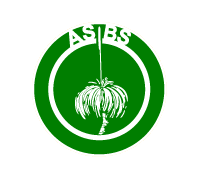
President's Report
ASBS Newsletter 99, June 1999
Surf's Up
Part of the appeal of my new home city is its proximity to good surf. But if your ability to ride waves is as good as mine, its much safer to wade the web. I think 'wading' is an appropriate term as websites become increasingly tangled and networks grind sluggishly into the next century.
For a breath of fresh sea air (albeit via the crisp autumn mornings of Canberra), take a look at the newly fashioned ASBS site. Andrew Lyne has finished a major overhaul to create a cleaner and faster (to access) site. The front screen presents a convenient entry point to information on the constitution, newsletter, Eichler Research Awards and more. A powerful search engine takes advantage of our (greatly appreciated) links with the Australian National Botanic Gardens website.
Soon to be added will be a database of all ASBS members and their e-mail addresses. Only two members indicated that they did not want their e-mail addresses published on the ASBS website, but as neither actually has an e-mail address we interpret this as either an answer to a different question or a interesting but not particularly pertinent reply.
We are working towards getting our own domain name but for now you can find us at www.anbg.gov.au/asbs.
International Federation of Systematic Societies
After catching the tail end of an e-mail trail on the SASB listserver, I contacted Vicki Funk at the Smithsonian Institution about a proposed new federation of systematic societies. Vicki was happy to have another society from Australia join the Federation.
The idea for the Federation arose in a discussion at the annual meeting of the Council of the Society of Systematic Biologists in the USA. Other societies approached include the Southern African Society of Systematic Biology, the Systematics Association (UK), the New Zealand Society of Systematic Biology and the Hennig Society. All of these, you will have noticed, are 'co-ed' societies - they include animals, plants and all things in between.
I have no hesitation in putting ASBS forward as a potential member. We are a long-lived, active group of systematists, with alot to offer the Federation. I think most ASBS members would want to, as Vicki Funk put it, 'encourage more international interaction in the systematic community and to use that interaction to call attention to the importance of systematics as well as to foster joint research projects'. The ASBS council supported me following up this linkage and I will attend a meeting with some of the interested parties during the International Botanical Congress in St Louis.
The Society of Systematic Biologists publishes Systematic Biology, with a quarter of subscribers (750) living outside the USA. One society in each country will be able to select an associate editor for Systematic Biology. At this stage it is likely that the Society of Australian Systematic Biologists will take on this role for Australia. There may be alternate ways for ASBS to contribute to editorial policy or practice and I welcome feedback on this issue.
Communication will be primarily by e-mail and a website (which could include among other things a joint website membership directory - perhaps we can push for a search engine accessing distributed databases like our own forthcoming membership list!). The Federation will not interfere with the business of member societies and there will be no subscription fee. It will be governed by a board consisting of the President and one additional member-at-large from each society (the latter to be appointed/elected by the society). The terms of the two representatives would be staggered with the member-at-large serving for possibly 4 years and the President for only 1 or 2 (depending upon the prescribed term of office within the society). The Board will 'meet' via e-mail and at some society meetings.
Tim Entwisle